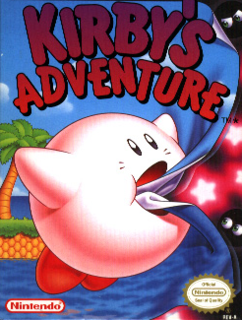Nightmare in Dreamland has a lovable presentation and solid platforming that's marred only by its shallow content.
The story begins when King Dedede takes over the Fountain of Dreams, the source of all of Dream Land's hopes and dreams, and shatters the Star Rod, the fountain's source of power, into several pieces. Without the fountain, nobody in Dream Land can have any dreams. Naturally, it falls upon Kirby to put a stop to this, so he begins his journey to find the pieces of the Star Rod and restore dreams to all of Dream Land. Like other games in the series, the story is minimalized and kept out of the way of the gameplay as much as possible. In fact, the only time when there is a story is during the opening and ending cutscenes.
While Kirby's Adventure looked nice for the 8-bit system it was created for, Nightmare in Dreamland overhauls the presentation and gives it a slick modern design. The environment is filled with bright colors and a variety of textures and designs. The characters have all been given a nice redesign and fit right in with the Kirby universe's perpetual cuteness. Of special note is the music, which has received the benefit of a more diverse MIDI compilation. All the classic Kirby songs have been updated, and they sound delightful and fitting with the rest of the game's charming atmosphere.
The appeal of Nightmare in Dreamland comes from the briskly-paced platforming. For those not familiar to the series, Kirby's job is just to get from one end of the level to the other, defeat whatever enemy or boss crosses his path, and play the occasional minigame for some extra lives. Kirby can inhale and swallow his enemies to gain their powers as well as fill himself with air to fly around the level. The abilities he can learn are pretty diverse, such as a swinging a sword or hammer, blowing fire or ice, turning into a UFO, or grabbing enemies and delivering a powerful backdrop. These abilities all work well and are nicely integrated into the game, with the exception of the ball powerup, in which Kirby can turn into a ball and bounce around the stage. This ability is frustrating to control, but there's also never a real moment where you're forced to use it, so thankfully, it can be avoided.
As par for the course, Nightmare in Dreamland's platforming is undeniably solid. The quick pacing and variety in the level and enemy design ensures that there's almost never a dull moment in the entire game. There isn't a single platform, enemy, or boss fight that doesn't feel poorly implemented or out of place in any level. The platforming's simplicity can also work as a downside, as the gameplay itself is on the shallow side. Kirby's move pool is limited compared to other games in the series like Super Star, and the main game itself is pretty easy. Some early boss fights, for instance, give very little challenge and can be defeated in seconds if Kirby has the right ability.
The biggest issue with the game is that it ends far too quickly. Nightmare in Dreamland is a very short game, bordering on about two to three hours for its main mode. There are some unlockable modes to be found, such as an extra mode where Kirby only has half of his hit points and another mode where you play through the entire game as quick as you can as another character. This extends the game by a little bit, but all of Nightmare in Dreamland's content can still be experienced within the span of ten hours. This limits the game to one that's better played in short bursts than for extended sessions at a time.
Still, Kirby: Nightmare in Dreamland is a solid platformer that's too charming in its visuals and simplicity to hate. It lacks the depth and extra content of some of the series' greats, but at the end of the day, it's still a fun and accessible game for as long as it lasts. Fans of the series or anyone looking for a quick and lighthearted break between more serious games can't go wrong tracking down a copy, and maybe pick up a Kirby plushy doll while they're at it and give his adorable little cheeks a good pinching.

